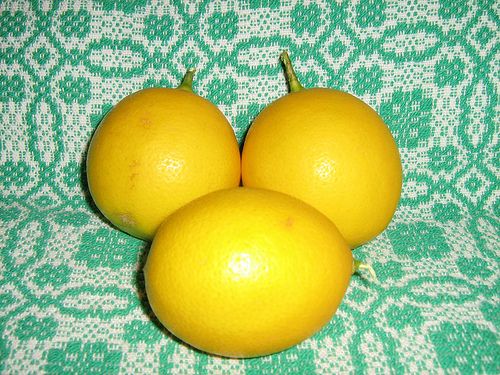
While I’m not a masterful fruit grower, I manage to successfully harvest the ones in my yard. I live in suburban town, so I don’t have a grove, but I do have a pear, two apricot, an orange, and three columnar apple trees. And finally, this year we have a dwarf Improved Meyer lemon tree.
When you’re an urban or suburban farmer, it’s best to stay with the dwarf varieties because you can get so many more squeezed onto your property. My lemon will grow to about 15 feet tall if it’s planted in the ground and 7-10 feet if it’s planted in a large pot. Getting this particular fruit tree was like scratching a never-ending itch. I use lemons so much in my cooking, iced tea, and fruit water that I find it hard to believe that we only recently planted one of our own.
Of course there are those that would argue that the Improved Meyer I purchased isn’t botanically a lemon tree at all, but rather a lemon-mandarin orange cross. And while that type of comment is rather snarky – they would also be correct. The Myer lemon tree was developed in China and brought to the US in 1908.
The “Improved Meyer” part came in when growers developed a tree that had better disease tolerance then the original run-of-the-mill Meyer. Its fruit is rounder and sweeter (less tart) than those of other lemon varieties. They’re quite succulent and become an orange-yellow color when they’re ripe.
Another plus about the Improved Meyer is that it can take colder temperatures than other lemon varieties. They’re good until temperatures hit about 54 degrees – after that they’ll go dormant. But dormant doesn’t mean “dead”. This tree can take short cold dips anywhere from 10 – 28 degrees. They can’t take that for long, though.
So, if you’re in a super cold zone, bring them indoors for the winter and once spring shows up again – scoot them back onto the porch. If you’re lucky, the tree will bloom before it even makes it outdoors again. If it does – lucky you! The blossom’s scent is heavenly.




















Comments
Log in or create an account to post a comment.
Sign up Log in